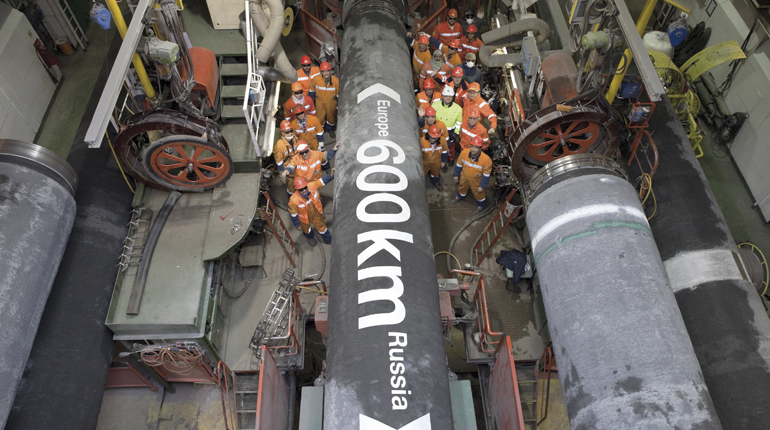Argentine shale gas bonanza beckons
Operators are driving down well costs and opening up a new growth phase in Argentina’s Vaca Muerta shale formation, Wood Mackenzie analysts tell Interfax.
Optimism continues to build around shale-rich Argentina, with the costs of a horizontal well in the Vaca Muerta formation set to fall by up to 25% over the next two years, according to analysts from consultancy Wood Mackenzie.
“Costs for [state-run] YPF’s horizontal wells in Vaca Muerta have ranged from $12-20 million per well, but that is a function of the play being in its early days,” said Callan McMahon, a Houston-based research analyst for the Americas at WoodMac.
“We could see a 25% reduction in the next couple of years based on analogues from United States unconventional plays. So we’re talking about $9-15 million per well,” he told Interfax on Wednesday.
However, the expert said it could cost more to drill wells in the formation’s gas window, because they are typically deeper and involve higher pressures.
WoodMac has forecast that Argentina will bring 200 wells online in 2015, but the number will drop next year as companies phase out vertical wells in favour of higher-yielding horizontal ones. There are approximately 460 producing wells in the Vaca Muerta formation.
The outlook for Argentina’s unconventional sector brightened at the weekend, with centre-right candidate Mauricio Macri winning the country’s run-off election.
However, no one expects change to happen overnight. “Argentina will need to address its above-ground issues, and that will take time,” said Horacio Cuenca, a Rio de Janeiro-based upstream research director for Latin America at WoodMac.
“But a devaluation of Argentina’s currency, as well as the resolution of the country’s foreign currency issues and a move to allow companies to repatriate dividends, should help with single-well economics,” he added.
Macri has vowed to dispense with President Cristina Fernández de Kirchner’s cocktail of ‘heterodox’ economics in favour of market-friendly policies. He prefers market forces over a planned economy, and has pledged to increase fuel production and meddle less in the energy sector.
“We’ve taken the election into account in these forecasts, which were made from research carried out between July and October,” said Cuenca. “We would have been cautiously optimistic about a growth in Vaca Muerta production in either case.”
He said both of Argentina’s presidential candidates – Macri and the centre-left Daniel Scioli – would have made big changes to Argentina’s upstream environment.
“Both candidates were likely to take measures such as liberalising oil and gas prices and devaluing the currency – but the pace of that change could be different,” Cuenca said.
Production to double
WoodMac has forecast that total oil and gas production from Vaca Muerta could double by 2018. Cuenca said the country’s unconventional industry was likely to enter a new growth phase after 2016, with output expected to increase by 10% next year.
“We should see a significant ramp-up post-2019, as well as lots of interest in Vaca Muerta’s gas window in the two preceding years,” he said.
Cuenca said the new administration was likely to review Argentina’s complex gas pricing system. But he added that Argentina offered excellent opportunities for gas producers, even if Buenos Aires were to significantly reduce the price paid for output from new areas from $7.50/MMBtu.
“Even if that decreased to $6.50/MMBtu or $6/MMBtu, that would be still be a huge incentive for producers,” said Cuenca. He added that tight gas wells located close to conventional reservoirs typically cost half of vertical shale wells, but offered double the recovery.
The consultancy used extensive production data from North American wells to forecast output from four sub-plays in Vaca Muerta – the play’s oil, gas and condensate windows, and the Loma Campana area.
YPF is exploring Loma Campana with US supermajor Chevron. The Argentine firm said earlier this year that the two companies had already invested more than $3 billion in Loma Campana and described the area as “the most important unconventional project in the world outside the United States”.
The so-called ‘IP30’ rate – the output in a well’s first 30 days of production – from Vaca Muerta is now comparable with the Eagle Ford formation in Texas, WoodMac said.
The IP30 rate in Loma Campana is around 646 barrels of oil equivalent per day (boe/d), which is up from 443 boe/d in 2014.
Cuenca said companies would need “a few years” to reach full-scale development for new unconventional projects in Argentina, and that they are unlikely to achieve significant production by 2019.
WoodMac has estimated that total capex in Vaca Muerta will be $1.2 billion in 2016 as companies prepare for full development.
Liked this article?
Sign up for exclusive, accurate and up-to-date natural gas news, analysis and intelligence, with global coverage of every phase of the gas chain.
By logging in or signing up for a free trial, you are agreeing to our terms and conditions, privacy policy and cookie policy.







